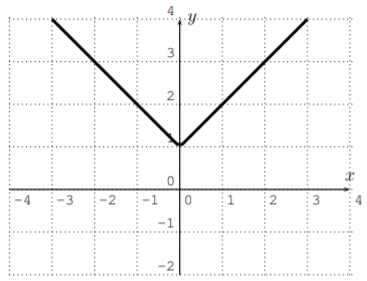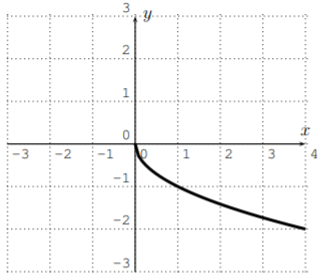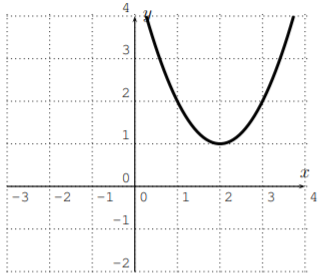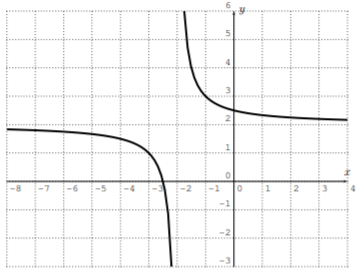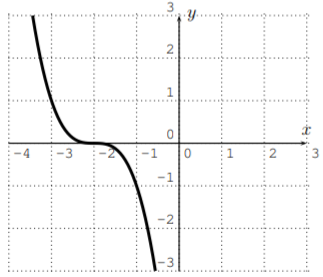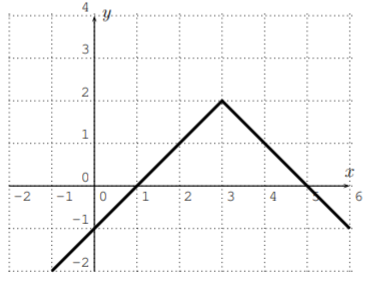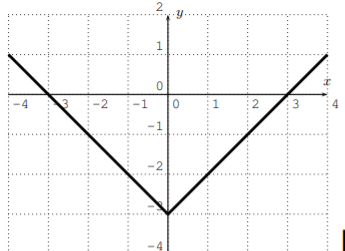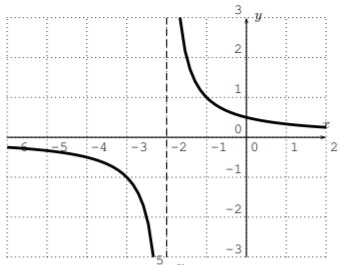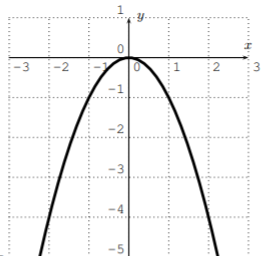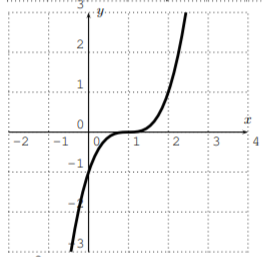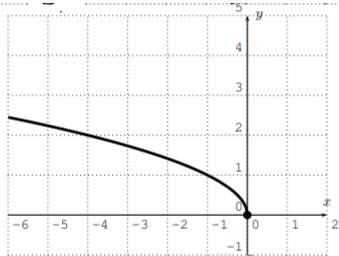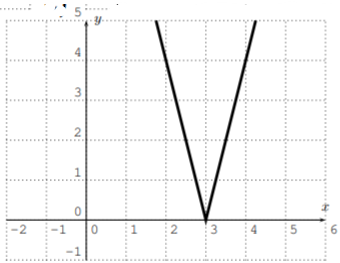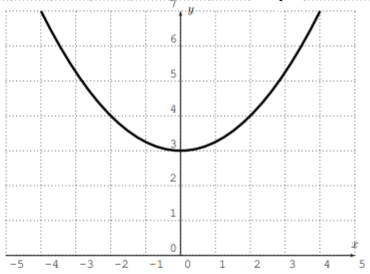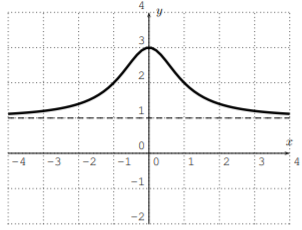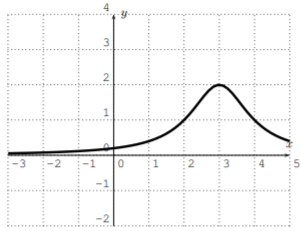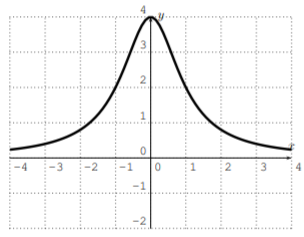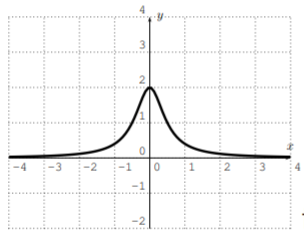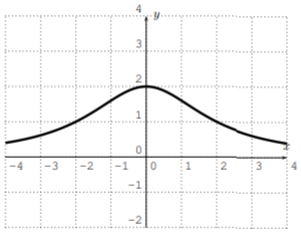5.3: Exercises
- Page ID
- 48977
\( \newcommand{\vecs}[1]{\overset { \scriptstyle \rightharpoonup} {\mathbf{#1}} } \)
\( \newcommand{\vecd}[1]{\overset{-\!-\!\rightharpoonup}{\vphantom{a}\smash {#1}}} \)
\( \newcommand{\dsum}{\displaystyle\sum\limits} \)
\( \newcommand{\dint}{\displaystyle\int\limits} \)
\( \newcommand{\dlim}{\displaystyle\lim\limits} \)
\( \newcommand{\id}{\mathrm{id}}\) \( \newcommand{\Span}{\mathrm{span}}\)
( \newcommand{\kernel}{\mathrm{null}\,}\) \( \newcommand{\range}{\mathrm{range}\,}\)
\( \newcommand{\RealPart}{\mathrm{Re}}\) \( \newcommand{\ImaginaryPart}{\mathrm{Im}}\)
\( \newcommand{\Argument}{\mathrm{Arg}}\) \( \newcommand{\norm}[1]{\| #1 \|}\)
\( \newcommand{\inner}[2]{\langle #1, #2 \rangle}\)
\( \newcommand{\Span}{\mathrm{span}}\)
\( \newcommand{\id}{\mathrm{id}}\)
\( \newcommand{\Span}{\mathrm{span}}\)
\( \newcommand{\kernel}{\mathrm{null}\,}\)
\( \newcommand{\range}{\mathrm{range}\,}\)
\( \newcommand{\RealPart}{\mathrm{Re}}\)
\( \newcommand{\ImaginaryPart}{\mathrm{Im}}\)
\( \newcommand{\Argument}{\mathrm{Arg}}\)
\( \newcommand{\norm}[1]{\| #1 \|}\)
\( \newcommand{\inner}[2]{\langle #1, #2 \rangle}\)
\( \newcommand{\Span}{\mathrm{span}}\) \( \newcommand{\AA}{\unicode[.8,0]{x212B}}\)
\( \newcommand{\vectorA}[1]{\vec{#1}} % arrow\)
\( \newcommand{\vectorAt}[1]{\vec{\text{#1}}} % arrow\)
\( \newcommand{\vectorB}[1]{\overset { \scriptstyle \rightharpoonup} {\mathbf{#1}} } \)
\( \newcommand{\vectorC}[1]{\textbf{#1}} \)
\( \newcommand{\vectorD}[1]{\overrightarrow{#1}} \)
\( \newcommand{\vectorDt}[1]{\overrightarrow{\text{#1}}} \)
\( \newcommand{\vectE}[1]{\overset{-\!-\!\rightharpoonup}{\vphantom{a}\smash{\mathbf {#1}}}} \)
\( \newcommand{\vecs}[1]{\overset { \scriptstyle \rightharpoonup} {\mathbf{#1}} } \)
\( \newcommand{\vecd}[1]{\overset{-\!-\!\rightharpoonup}{\vphantom{a}\smash {#1}}} \)
\(\newcommand{\avec}{\mathbf a}\) \(\newcommand{\bvec}{\mathbf b}\) \(\newcommand{\cvec}{\mathbf c}\) \(\newcommand{\dvec}{\mathbf d}\) \(\newcommand{\dtil}{\widetilde{\mathbf d}}\) \(\newcommand{\evec}{\mathbf e}\) \(\newcommand{\fvec}{\mathbf f}\) \(\newcommand{\nvec}{\mathbf n}\) \(\newcommand{\pvec}{\mathbf p}\) \(\newcommand{\qvec}{\mathbf q}\) \(\newcommand{\svec}{\mathbf s}\) \(\newcommand{\tvec}{\mathbf t}\) \(\newcommand{\uvec}{\mathbf u}\) \(\newcommand{\vvec}{\mathbf v}\) \(\newcommand{\wvec}{\mathbf w}\) \(\newcommand{\xvec}{\mathbf x}\) \(\newcommand{\yvec}{\mathbf y}\) \(\newcommand{\zvec}{\mathbf z}\) \(\newcommand{\rvec}{\mathbf r}\) \(\newcommand{\mvec}{\mathbf m}\) \(\newcommand{\zerovec}{\mathbf 0}\) \(\newcommand{\onevec}{\mathbf 1}\) \(\newcommand{\real}{\mathbb R}\) \(\newcommand{\twovec}[2]{\left[\begin{array}{r}#1 \\ #2 \end{array}\right]}\) \(\newcommand{\ctwovec}[2]{\left[\begin{array}{c}#1 \\ #2 \end{array}\right]}\) \(\newcommand{\threevec}[3]{\left[\begin{array}{r}#1 \\ #2 \\ #3 \end{array}\right]}\) \(\newcommand{\cthreevec}[3]{\left[\begin{array}{c}#1 \\ #2 \\ #3 \end{array}\right]}\) \(\newcommand{\fourvec}[4]{\left[\begin{array}{r}#1 \\ #2 \\ #3 \\ #4 \end{array}\right]}\) \(\newcommand{\cfourvec}[4]{\left[\begin{array}{c}#1 \\ #2 \\ #3 \\ #4 \end{array}\right]}\) \(\newcommand{\fivevec}[5]{\left[\begin{array}{r}#1 \\ #2 \\ #3 \\ #4 \\ #5 \\ \end{array}\right]}\) \(\newcommand{\cfivevec}[5]{\left[\begin{array}{c}#1 \\ #2 \\ #3 \\ #4 \\ #5 \\ \end{array}\right]}\) \(\newcommand{\mattwo}[4]{\left[\begin{array}{rr}#1 \amp #2 \\ #3 \amp #4 \\ \end{array}\right]}\) \(\newcommand{\laspan}[1]{\text{Span}\{#1\}}\) \(\newcommand{\bcal}{\cal B}\) \(\newcommand{\ccal}{\cal C}\) \(\newcommand{\scal}{\cal S}\) \(\newcommand{\wcal}{\cal W}\) \(\newcommand{\ecal}{\cal E}\) \(\newcommand{\coords}[2]{\left\{#1\right\}_{#2}}\) \(\newcommand{\gray}[1]{\color{gray}{#1}}\) \(\newcommand{\lgray}[1]{\color{lightgray}{#1}}\) \(\newcommand{\rank}{\operatorname{rank}}\) \(\newcommand{\row}{\text{Row}}\) \(\newcommand{\col}{\text{Col}}\) \(\renewcommand{\row}{\text{Row}}\) \(\newcommand{\nul}{\text{Nul}}\) \(\newcommand{\var}{\text{Var}}\) \(\newcommand{\corr}{\text{corr}}\) \(\newcommand{\len}[1]{\left|#1\right|}\) \(\newcommand{\bbar}{\overline{\bvec}}\) \(\newcommand{\bhat}{\widehat{\bvec}}\) \(\newcommand{\bperp}{\bvec^\perp}\) \(\newcommand{\xhat}{\widehat{\xvec}}\) \(\newcommand{\vhat}{\widehat{\vvec}}\) \(\newcommand{\uhat}{\widehat{\uvec}}\) \(\newcommand{\what}{\widehat{\wvec}}\) \(\newcommand{\Sighat}{\widehat{\Sigma}}\) \(\newcommand{\lt}{<}\) \(\newcommand{\gt}{>}\) \(\newcommand{\amp}{&}\) \(\definecolor{fillinmathshade}{gray}{0.9}\)Find a possible formula of the graph displayed below.
- Answer
-
- \(y=|x|+1\)
- \(y=-\sqrt{x}\)
- \(y=(x-2)^{2}+1\)
- \(y=\dfrac{1}{x+2}+2\)
- \(y=-(x+2)^{3}\)
- \(y=-|x-3|+2\)
Sketch the graph of the function, based on the basic graphs in Section 5.1 and the transformations described above. Confirm your answer by graphing the function with the calculator.
- \(f(x)=|x|-3\)
- \(f(x)=\dfrac 1 {x+2}\)
- \(f(x)=-x^2\)
- \(f(x)=(x-1)^3\)
- \(f(x)=\sqrt{-x}\)
- \(f(x)=4\cdot |x-3|\)
- \(f(x)=-\sqrt{x}+1\)
- \(f(x)=(\dfrac{1}{2}\cdot x)^2+3\)
- Answer
-
Consider the graph of \(f(x)=x^2-7x+1\). Find the formula of the function that is given by performing the following transformations on the graph.
- Shift the graph of \(f\) down by \(4\).
- Shift the graph of \(f\) to the left by \(3\) units.
- Reflect the graph of \(f\) about the \(x\)-axis.
- Reflect the graph of \(f\) about the \(y\)-axis.
- Stretch the graph of \(f\) away from the \(y\)-axis by a factor \(3\).
- Compress the graph of \(f\) towards the \(y\)-axis by a factor \(2\).
- Answer
-
- \(y=x^{2}-7 x-3\)
- \(y=(x+3)^{2}-7 \cdot(x+3)+1=x^{2}-x-11\)
- \(y=-x^{2}+7 x-1\)
- \(y=x^{2}+7 x+1\)
- \(y=\dfrac{1}{9} x^{2}-\dfrac{7}{3} x+1\)
- \(y=4 x^{2}-14 x+1\)
How are the graphs of \(f\) and \(g\) related?
- \(f(x)=\sqrt{x}, \quad g(x)=\sqrt{x-5}\)
- \(f(x)=|x|, \quad g(x)=2 \cdot|x|\)
- \(f(x)=(x+1)^3 , \quad g(x)=(x-3)^3\)
- \(f(x)=x^2+3x+5, \quad g(x)=(2x)^2+3(2x)^2+5\)
- \(f(x)=\dfrac 1 {x+3}, \quad g(x)=-\dfrac 1 x\)
- \(f(x)= 2 \cdot |x|, \quad g(x)=|x+1|+1\)
- Answer
-
- shift to the right by \(5\)
- stretched away from the \(x\)-axis by a factor \(2\)
- shift to the right by \(4\)
- compressed towards the \(y\)-axis by a factor \(2\)
- shifted to the right by \(3\) (to get the graph of \(y=\dfrac{1}{x}\) ) and then reflected about the \(x\)-axis
- compressed towards the \(x\)-axis by a factor \(2\) (you get \(y=|x|\)) then shifted to the left by \(1\) and up by \(1\)
Determine, if the function is even, odd, or neither.
- \(y=2x^3\)
- \(y=5x^2\)
- \(y=3x^4-4x^2+5\)
- \(y=2x^3+5x^2\)
- \(y=|x|\)
- \(y=\dfrac{1}{x}\)
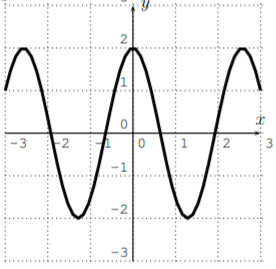
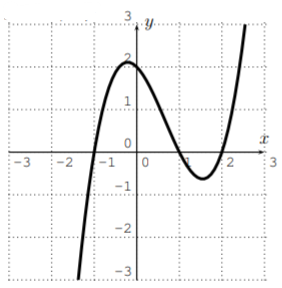
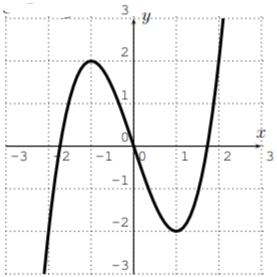
- Answer
-
- odd
- even
- even
- neither
- even
- odd
- even
- neither
- odd
The graph of the function \(y=f(x)\) is displayed below.
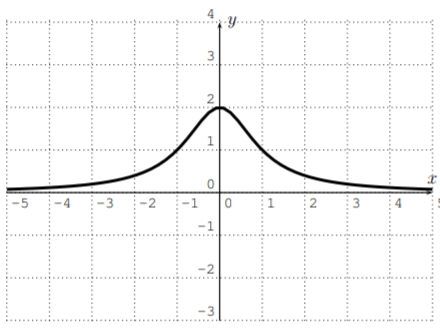
Sketch the graph of the following functions.
- \(y=f(x)+1\)
- \(y=f(x-3)\)
- \(y=-f(x)\)
- \(y=2f(x)\)
- \(y=f(2x)\)
- \(y=f\left (\dfrac 1 2 x\right )\)
- Answer
-



